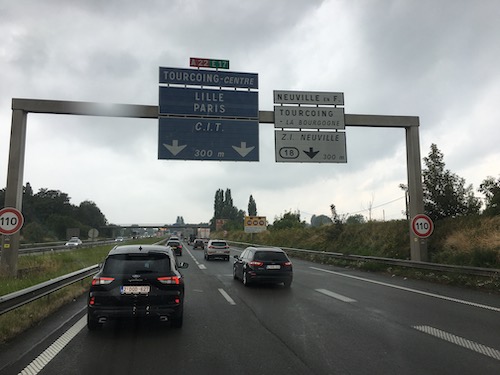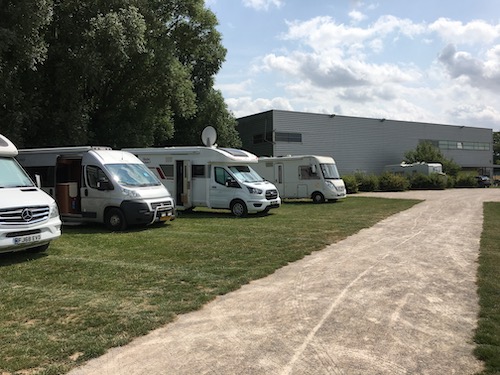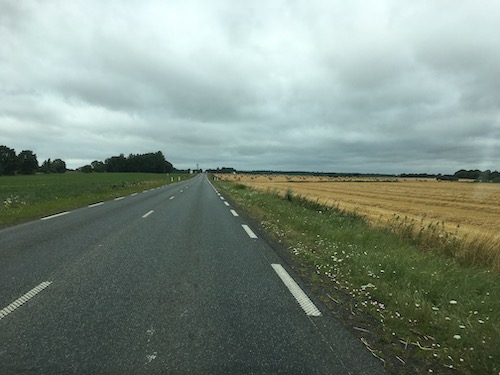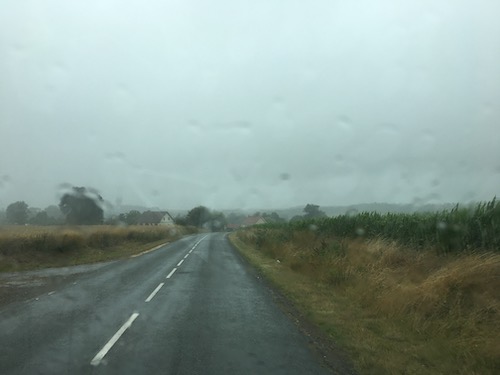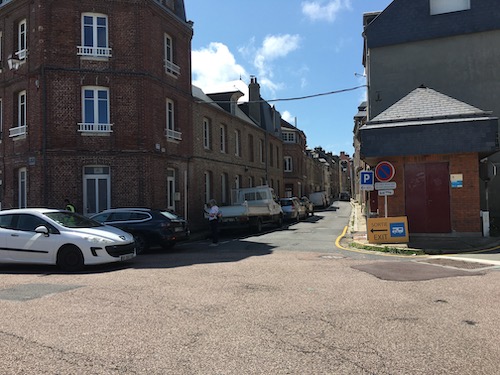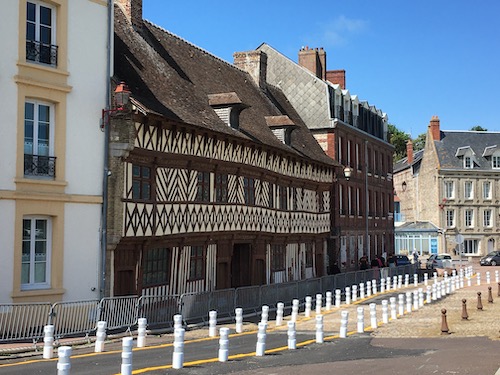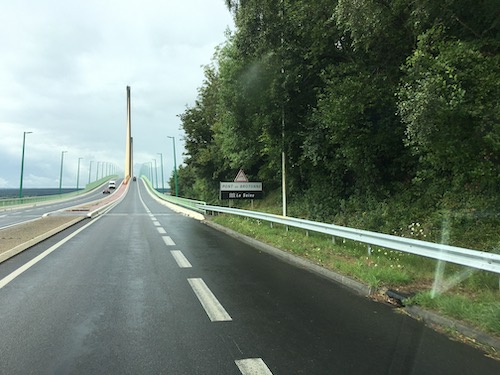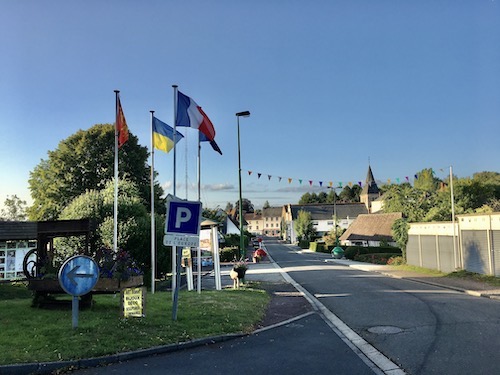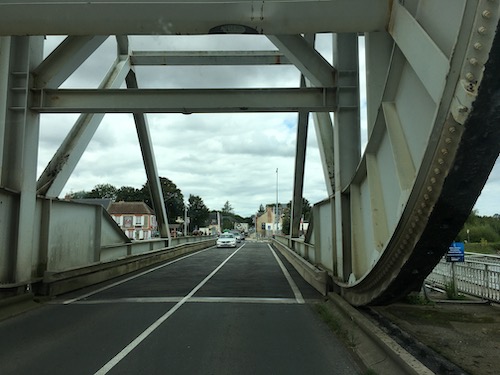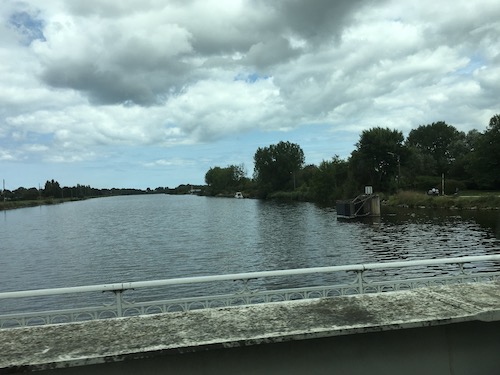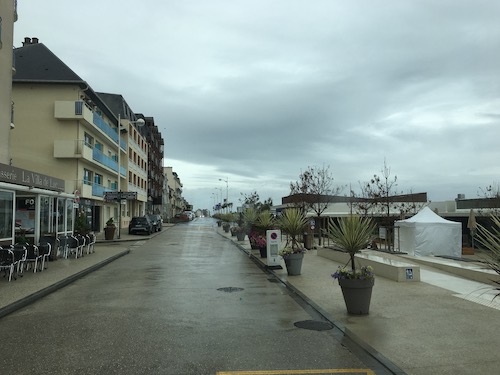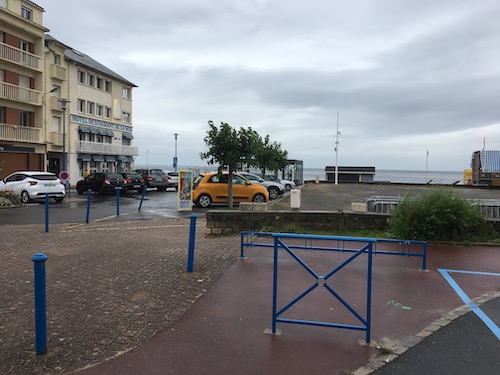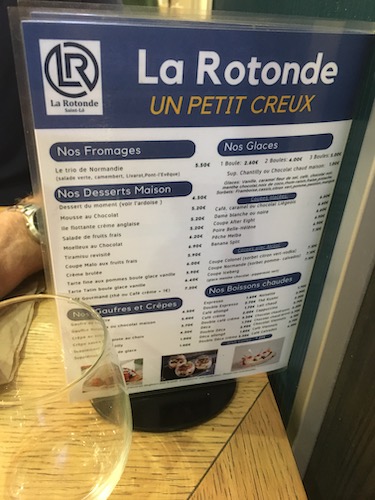2023 Normandy Brittany I
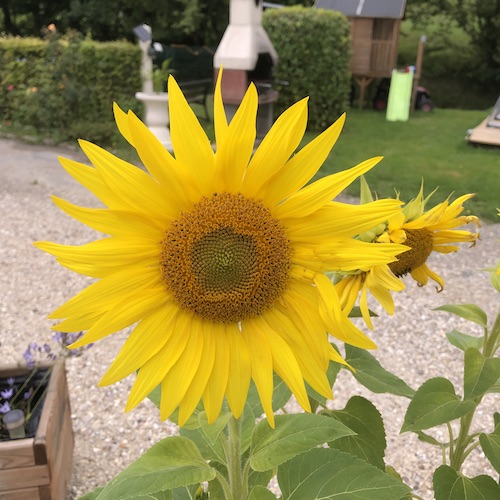
July-August 2023: A mostly rainy trip through Normandy and Brittany

The blue line indicates the outward journey
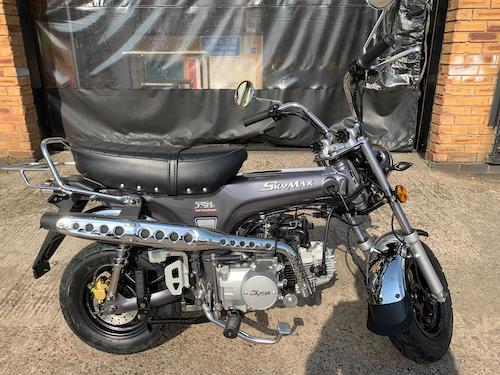
On the Internet, I found a cute little motorbike. On my way to the South, I go for a test ride and decide to buy it. To be picked up on the way back from our holiday.
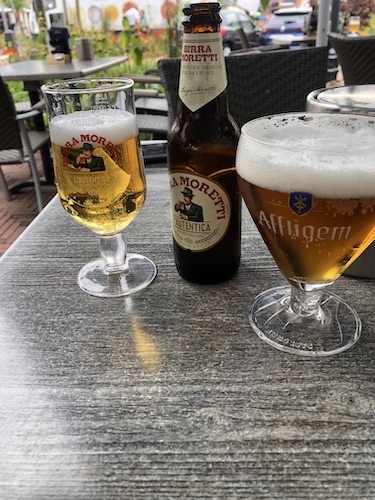
To celebrate the start of our trip, we treat ourselves to a tasty beer.
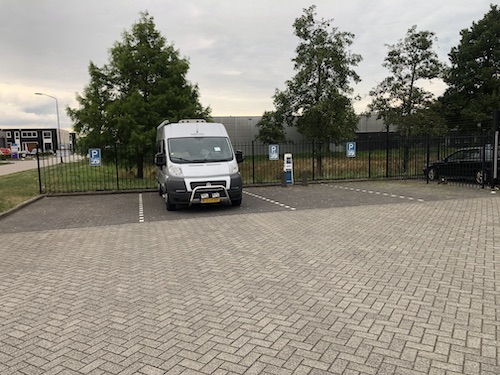
Shortly before the Belgian border, we spend the night in the grounds of a large motorhome and caravan shop.
Southern Belgium.
Richebourg. Sylvia goes to pick up the Wi-Fi code at the town hall in her best French.
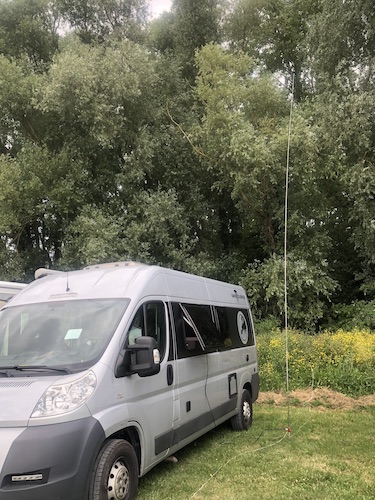
As F/PA0EWS, I make a number of QSOs on 20m. 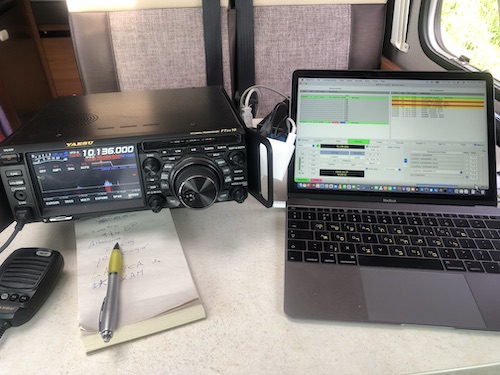
We managed to travel hardly any motorways this holiday, at least we managed to avoid all toll roads.

Just outside Richebourg are some impressive military cemeteries.A large number of Indian soldiers fought in the British army in WW1. They have their own memorial.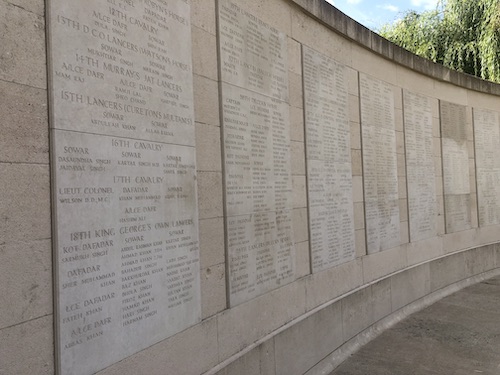

The tigers stand guard.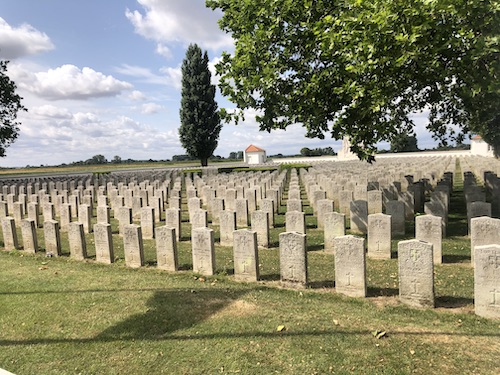
Next to it, a cemetery of the fallen Portuguese, who also fought on the Allied side.
Not the last rain this holiday. Fortunately, the temperature remains pleasant.
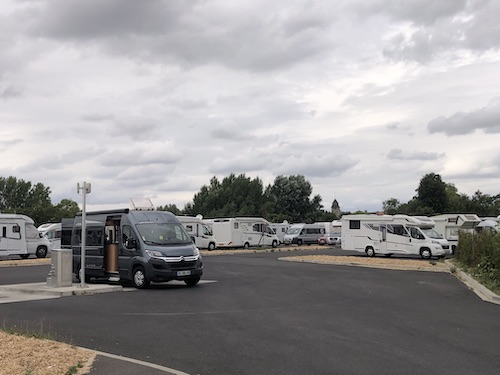 Overnight stay in Arras, where Dutch was once spoken! Not charming, but good Wi-Fi.
Overnight stay in Arras, where Dutch was once spoken! Not charming, but good Wi-Fi.
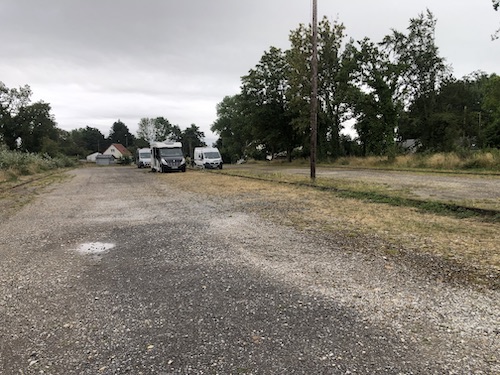
Overnight in Brighton. This time not in East Sussex, but in the French department of Somme.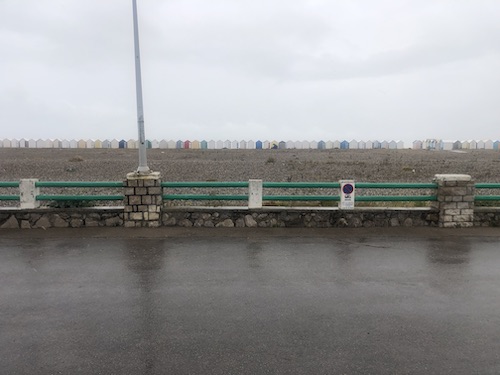
We continue west through a series of seaside resorts, all of which look equally dreary in this weather. Norman half-timbered houses are different again from German ones.
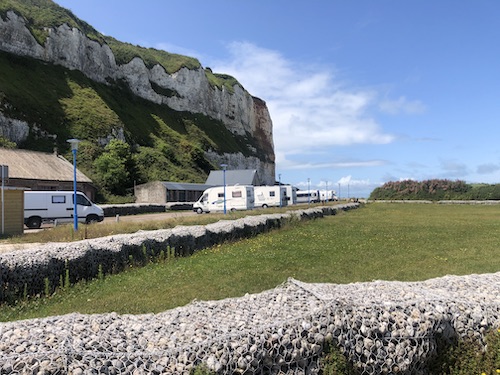
Saint-Valéry-en-Caux has a lovely motorhome area, at the foot of the chalk cliffs and only separated from the Channel by a narrow beach. It is a bit of a search through narrow winding roads, but the place more than makes up for that. 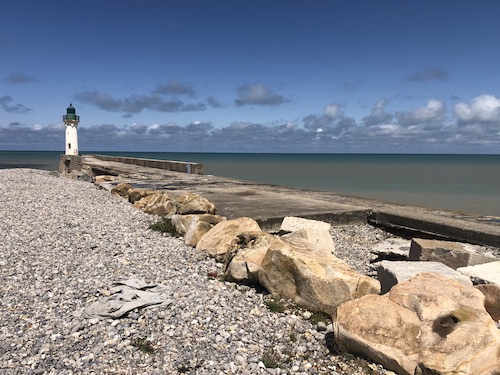
The diversion through narrow streets serves to protect this medieval property from damage from too much traffic.
Bridge across the Seine estuary.
Seen an incredible number of rolls of hay.
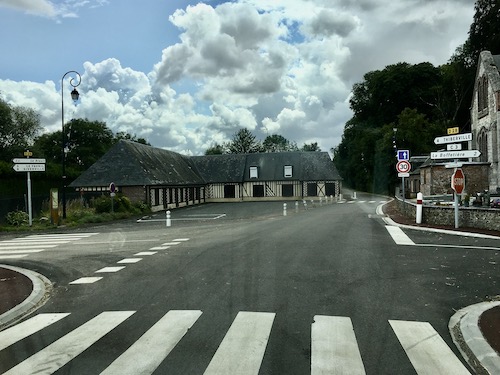
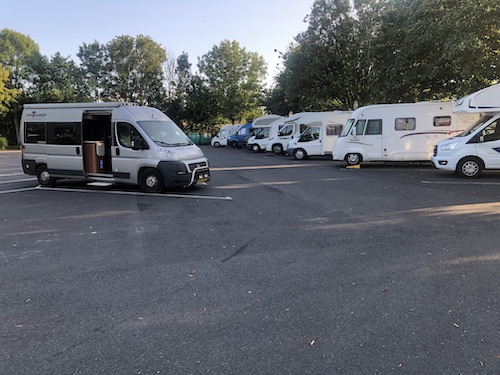
After a nice dinner we arrive at Cambremer on the Place de l'Europe.
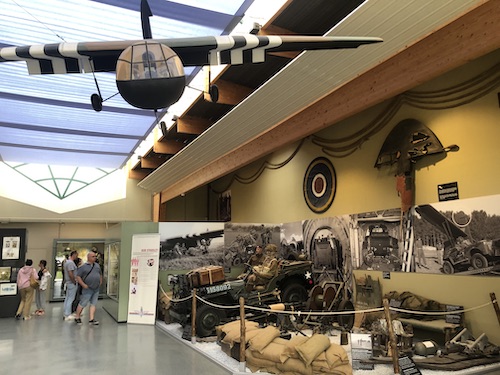
The next day we more or less accidentally discover the museum, dedicated to the battle of the Pegasus bridge in Ranville. The night before the D-Day landings, a small group of British commandos landed near the bridge in gliders, taking the German defenders by surprise and securing the bridge for the invasion troops.
Leaving Ranville we drive over the new bridge over the Caen Canal, which bears a close resemblance to the original one (now the showpiece of the museum).
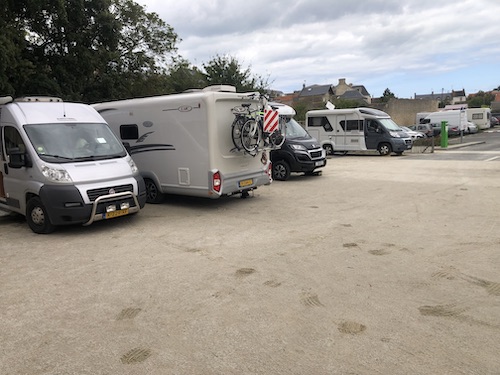
In Lion-sur-Mer we encounter a CCP site for the very first time. Many more cases will follow, once we obtained the necessary smart card.
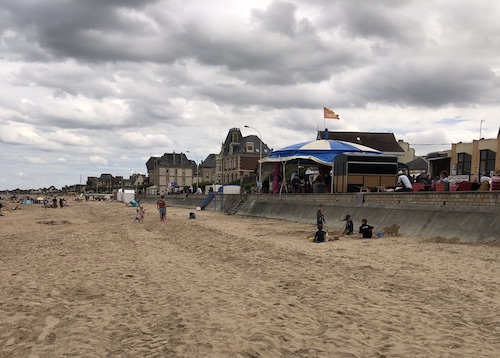
It's hardly beach weather. But everyone is trying to make the best of it.
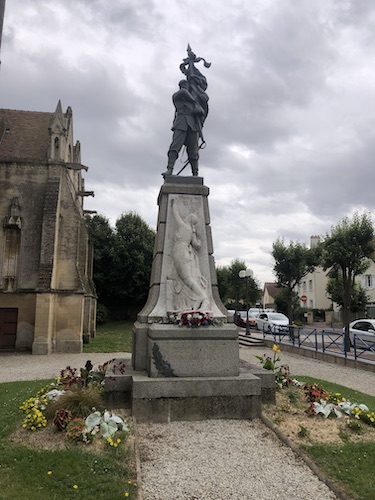
Monument to the fallen in Lion-sur-Mer.
More gloomy seaside resorts in the rain on the way to....
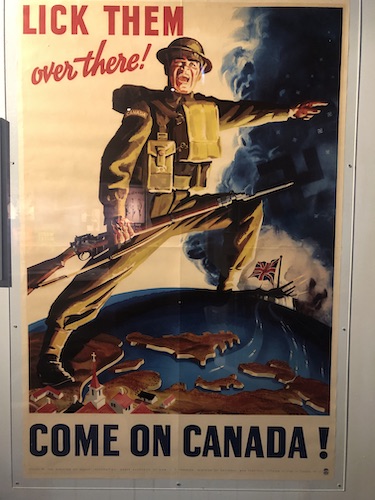
... Juno Beach Centre, operated by bilingual Canadian youngsters.
Here the role of the Canadians in the invasion is explained, again illustrated with numerous relics. Life in Canada before, during and after the war is also explained.
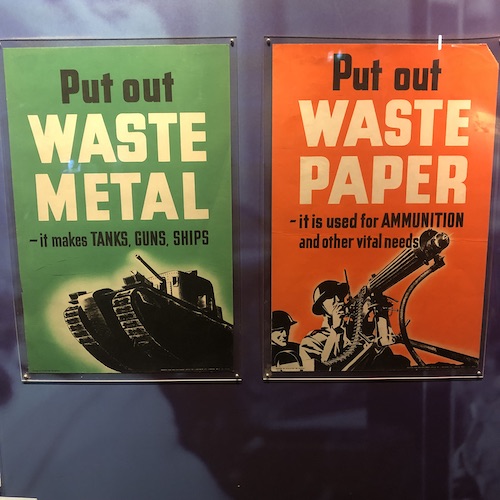
Waste separation, then not for the environment, but to save raw materials for the war industry.
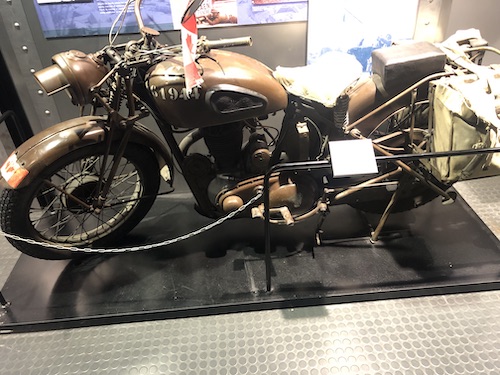
An old friend. Exactly such a BSA M20 was my very first motorcycle in 1965.
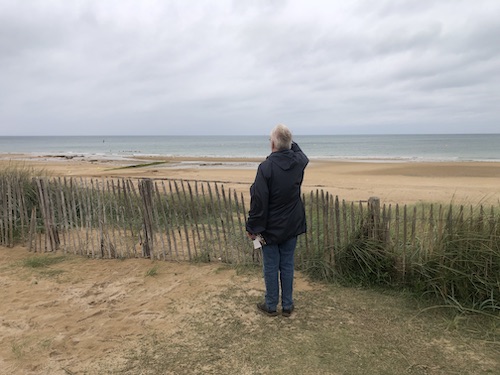
In June '44, you could have seen them approaching!
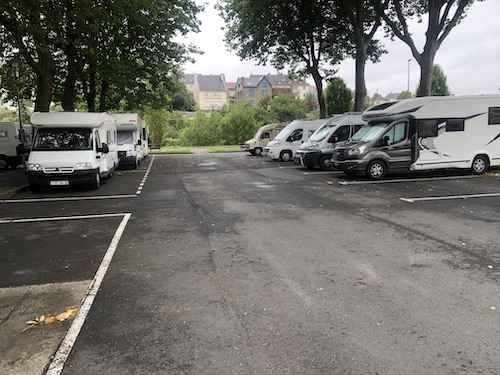
That evening, we park in the centre of Saint-Lô. A free spot with free water...
... and just around the corner a nice restaurant, with very friendly service and super tasty food.
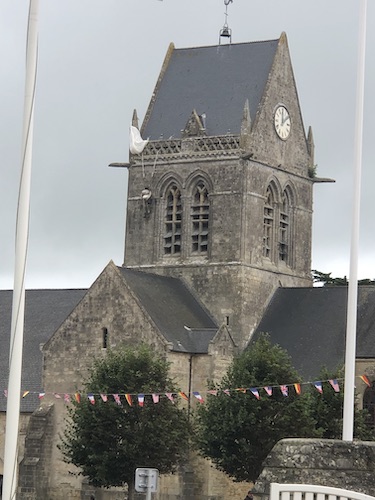
Another day: another invasion museum. This time seen through an American lens. Massive air landings took place at Sainte-Mère-Église, near Utah beach, partly clearing the passage for the invasion forces from the sea.
The memorial museum contains unique, original objects.
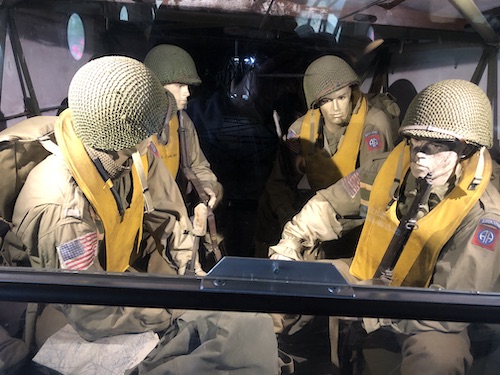
Reconstruction of how the airborne troops were sitting in their Waco glider.
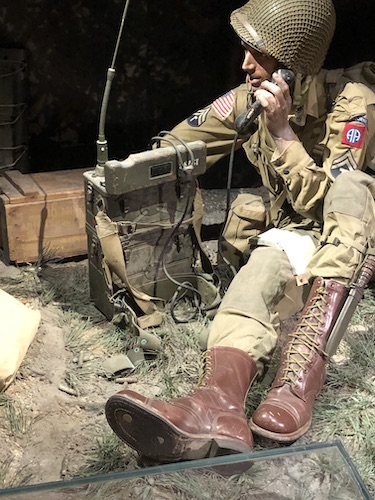
Radio communication was vital even back then.
Continued on next page (click)
To last page (click)
Go to top of page ![]()
